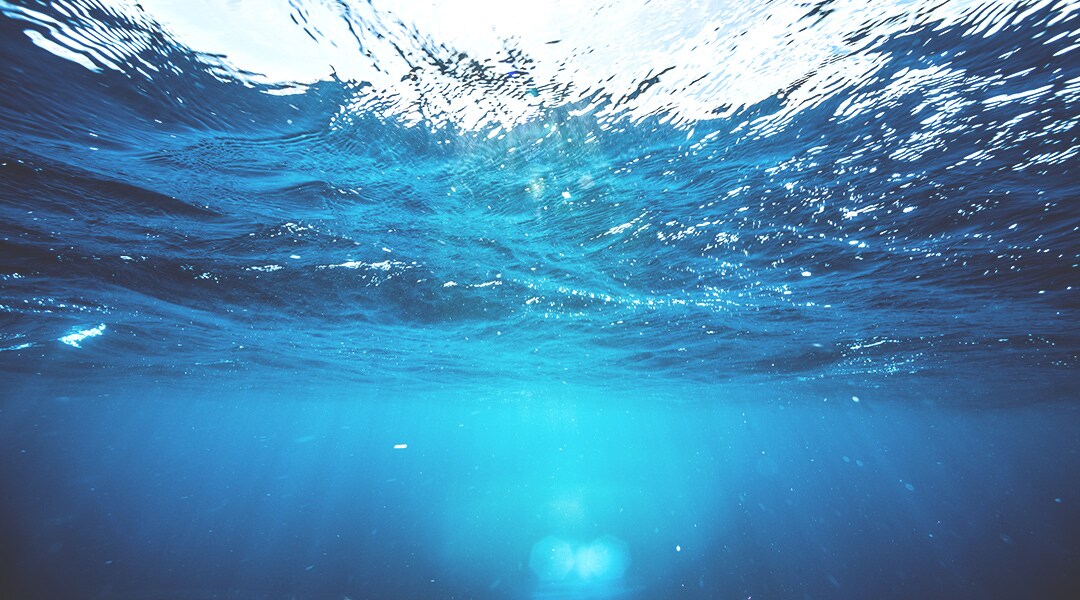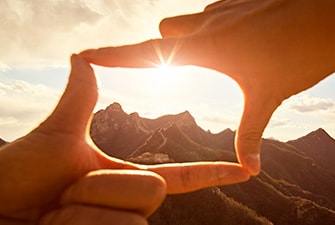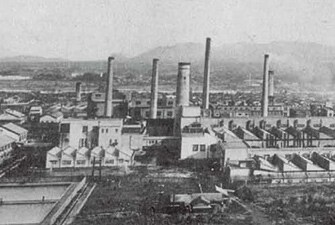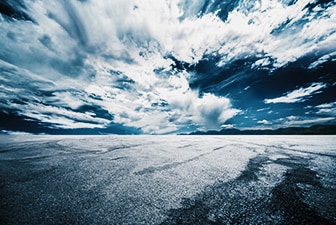#07
Turn of the tide: tackling water scarcity with technology and common purpose
As the world’s water crisis intensifies, governments, business and communities are uniting to protect clean water sources, use them more responsibly, and even create new drinking water from the sea.

On Morocco’s Mount Boutmezguida, at the edge of the Sahara Desert, giant nets rise from the rugged terrain. They have been set up to catch an elusive prey: fog. Named CloudFisher, this imaginative solution for securing freshwater has transformed lives in one of the world’s most arid areas.
The Sidi Ifni region gets less than 120 millimeters of rain a year, but thick fog rolls in regularly from the Atlantic Ocean. The nets trap the moisture, which condenses and drips into collection trays – providing 6,300 liters of clean water per day to around 400 residents in five villages, which were long left high and dry.
The fog catcher – driven by non-profit Dar Si Hmad using technology from German company Aqualonis – is an example of how innovation is meeting common purpose to tackle one of humanity’s biggest challenges: water scarcity.
The World Economic Forum (WEF) has ranked the global water crisis as one of the top five threats to humankind for eight years running. Companies are now partnering with communities to tackle this crisis with technologies such as the Internet of Things (IoT) to enable precision irrigation; solar energy to power reverse-osmosis desalination plants; next-generation systems to recycle storm water; even wind turbines that trap air and from it extract water.
“Companies, NGOs and governments are working together to protect watersheds, design more resilient cities, and improve efficiency,” the WEF says.
Japan’s Toray – developer of state-of-the-art membranes that separate the salt from seawater to create freshwater – believes a collective effort is required to ensure the right to clean water for all, which is one of the UN’s 17 Sustainable Development Goals (SDGs). It is partnering with global organizations and companies, such as Hitachi, to meet this vital challenge through ground-breaking innovation.
Water: the vital ingredient for all
Urgent action is needed to stem an unfolding human tragedy. A recent study finds that four billion people – two-thirds of the global population – suffer from severe water scarcity at least one month of the year. Half a billion people face severe water scarcity all year round. The crisis deepens every year. Demand for water is on course to outstrip supply by 40 percent by 2030, warns the UN’s International Resource Panel.
Access to clean water is also critical for the success of other UN SDGs, including defeating hunger and poverty, protecting ecosystems and battling climate change – underscoring the magnitude of the challenge. “If we don’t get it right on water,” says Guangzhe Chen, the World Bank’s senior director for Water Global Practice, “then we will not succeed in achieving the other SDGs either.”
The World Bank predicts that global food demand will grow at least 20 percent over the next 15 years. Since farming accounts for roughly 70 percent of global water consumption, water scarcity raises the likelihood of more frequent famines. Competition for water resources, meanwhile, raises – and, in some regions, compounds – the risk of conflict in the Middle East, sub-Saharan Africa and southern Asia.
Groundswell of support
Technology will not solve all of the world’s water problems. It also requires long-term investments to the tune of $114 billion per year, according to the World Bank. This in turn requires policymakers to design the regulatory frameworks that will encourage finance to flow into the solutions that will turn the tide. Technological innovations also hold the key to transforming the way we use water, harness fresh resources and protect our watershed.
Smart sensors, for example, will monitor moisture in soil and provide data on exactly when and where to plant crops and irrigate – a powerful tool both for yield and conservation. In cities, smart sensors are also being used by water utilities to detect leaking pipes more accurately and quickly. In households, smart meters might help families gauge how much water they’re consuming – and encourage them to cut back.
Toray, meanwhile, is pioneering new ways to turn seawater into drinking water, bringing hope to regions from the Middle East to China. In the Pacific Islands it drives an aid program, along with various organizations, to install desalination systems powered by solar energy.
In Morocco, the Ait Baamrane tribes have traditionally sent girls to fetch water for nearly four hours a day, often keeping them out of school. The CloudFisher project, winner of the UN’s Momentum for Change award in 2016, renders that work obsolete – the nets are bringing not only the gift of water but, for village girls, the chance of an education.
Educating children about earth’s most precious resource is key to meeting goals
Toray believes that inspiring young people to champion water conservation is an essential part of the mission to overcome scarcity. The company sends employees to elementary and junior high schools around the world to teach children about the relationship between water treatment and environmental protection. In 2017, Toray went to 44 schools in Japan, the United States and Thailand to heighten awareness of water conservation and the innovations that enable it. The students discuss how to reduce water use, and learn about processes that help create freshwater. Toray also carries out daily workshops on the importance of freshwater at Tokyo’s Science Museum. Preserving water for tomorrow’s children means teaching them how to treasure it today.



